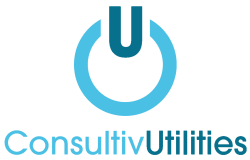The shift towards a greener society brings both challenges and opportunities for businesses across the energy supply chain. As we transition from traditional methods of energy generation to sustainable alternatives, the need for flexibility in supply and demand becomes more important. Understanding the implications of Market-wide Half-Hourly Settlement (MHHS) is crucial to successfully manging your business energy.
Embrace sustainable change
With the additional electricity demands of a greener society we are moving towards a world where demand needs to flex more to generation, rather than the other way around. In this journey, businesses that embrace MHHS will be able to navigate market challenges and seize opportunities of a net zero future.
Understanding MHHS: A game changer for business
MHHS brings transformative changes for businesses. It requires effort from energy suppliers to ensure all meters can record and deliver half-hourly data accurately, enabling better cost reflectively and effective price signals crucial for fostering flexibility.
However, it’s not just another regulatory change; it’ a fundamental transformation in how businesses interact with the energy market. With MHHS, the accuracy of energy consumption data becomes paramount, as half-hourly meter readings replace estimated consumption. This shift enables more precise cost allocation and facilities the implementation of flexible pricing structures tailed to real-time demand fluctuations.
Elexon is the Senior Responsible Owner (SRO) of the MHHS Programme. Ofgem is the Programme Sponsor for MHHS. The industry timescale to deliver MHHS starts in Autumn 2025 and runs through to 2026.
MHHS in a nutshell
- Enables more accurate data about the energy you use, reducing estimated bills and helping to deliver more accurate energy supply invoices
- Delivers a smarter and flexible energy system
- Modernises how energy users interact with the market and their suppliers
Breaking it down further
- Migration window for MHHS starts in 2025 and ends in 2026
- Changes will be made behind the scenes (you don’t have to worry about anything from your end)
- The changeover will depend on what services you have with your individual supplier
How to identify if you have a half-hourly meter
Simply check your Meter Point Administration Number (MPAN) on your electricity bill. If your profile class (first two-digit number in the box to the immediate right of the ‘S’) is 00, then you have a half hourly meter.
If you do not have a half-hourly meter installed, your energy supplier will arrange this within the migration window period.
The impact on your business energy strategy
Keep engaged: Stay informed about MHHS implementation timelines, regulatory requirements, and industry best practices. Engage with your energy supplier, broker, and regulatory authorities to understand their expectations and requirements for compliance.
Invest in data analytics: By utilising half-hourly data you can better monitor your usage and use the data to make choices to be more energy efficient.
Stay agile: Recognise that MHHS implementation is just the beginning of a broader shift towards a more dynamic and flexible energy market. It opens the door to access more flexible pricing contracts in the future, such as cost-saving incentives for off-peak usage, or more accurate renewal prices from suppliers when you go to tender for your next renewal.
In conclusion, by understanding the implications of MHHS and taking proactive steps to prepare your business, you can position yourself for success in this new era of energy management.
Want to know more about MHHS? Download our free guide here: Preparing your business for Market-Wide Half-Hourly Settlement (MHHS)
Categories:


